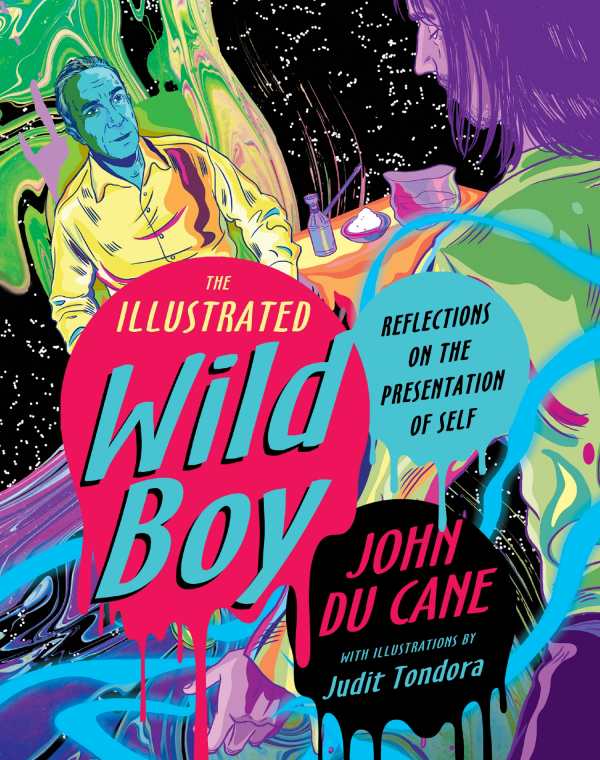The Illustrated Wild Boy
Reflections on the Presentation of Self
A voyeuristic literary and visual pleasure, The Illustrated Wild Boy is a shocking, amusing, and entertaining memoir.
John Du Cane’s memoir The Illustrated Wild Boy contains adventures and anecdotes from a lifetime spent exploring at the fringes of society.
The book’s stories live up to their “wild” billing, with accounts of sexual experiences realized and almost realized, a conversation with a murderer, and excrement served up in patties for dinner, among other subjects. Each story is no more than a page or two long, and they are told in concise, controlled explosions of words chosen for maximum impact.
The book’s pace is unrelenting. As soon as one story ends, the next arrives, like a series of cars poised for hit-and-run collisions. A raw vitality permeates the book, reflecting a try-anything philosophy. Humor is also abundant amid tales of near deaths, real and imagined.
Du Cane, a filmmaker, spiritual seeker, and fitness guru, writes with a distinct and appealing voice, world wise but not world weary. His stories, like one that explains how he came to eat some of his cremated father’s ashes, are memorable, of the sort that can be read aloud to regale an audience. They’re sorted into chapters that provide structure and that are titled to give a hint of what lies in wait. The titles of individual stories, such as “The Angry Dwarf from Horror Hospital,” also inspire curiosity.
A list of encountered notables includes Lou Reed, Mick Jagger, and Andy Warhol, and the stories also cover time spent across the globe. The fearless inclusion of embarrassing details, like a semi-accidental sexual encounter with a drag queen, enhance the rich, funny tales. These extensive, excessive life experiences are filtered through Du Cane’s perspective as a husband and father; the book acknowledges both the nobility and the comedy inherent to human life.
The writing is punchy, muscular, and bracing. Anecdotes begin with first lines that are intriguing and immersive, such as “The Buick Century belched to a stop on red” and “The Americans invented ‘dating’—although they are usually puzzled when I tell them so.” Stories’ final lines are also funny and thoughtful, often ending with tantalizing ellipses to indicate that they might not yet be complete; they are somewhat open to interpretation.
Judit Tondora’s illustrations appear every couple of pages. They utilize bright colors and bold designs. They sometimes consist of quotes from the text in large fonts that play against textured backdrops and collages, showing bits of people or other recognizable elements of the relevant story. More striking are the illustrations that don’t use text at all: a stained-glass-style image of Lou Reed’s death while doing Tai Chi with his wife Laurie Anderson; and a Cubist, Picasso-style likeness of Du Cane. The illustrations show a fascinating variety of creative visual styles, from comic-book-style pictorial storytelling to full-page images that vary to match the tones of their connected stories.
A voyeuristic literary and visual pleasure, The Illustrated Wild Boy is a shocking, amusing, and entertaining memoir.
Reviewed by
Peter Dabbene
Disclosure: This article is not an endorsement, but a review. The publisher of this book provided free copies of the book and paid a small fee to have their book reviewed by a professional reviewer. Foreword Reviews and Clarion Reviews make no guarantee that the publisher will receive a positive review. Foreword Magazine, Inc. is disclosing this in accordance with the Federal Trade Commission’s 16 CFR, Part 255.

